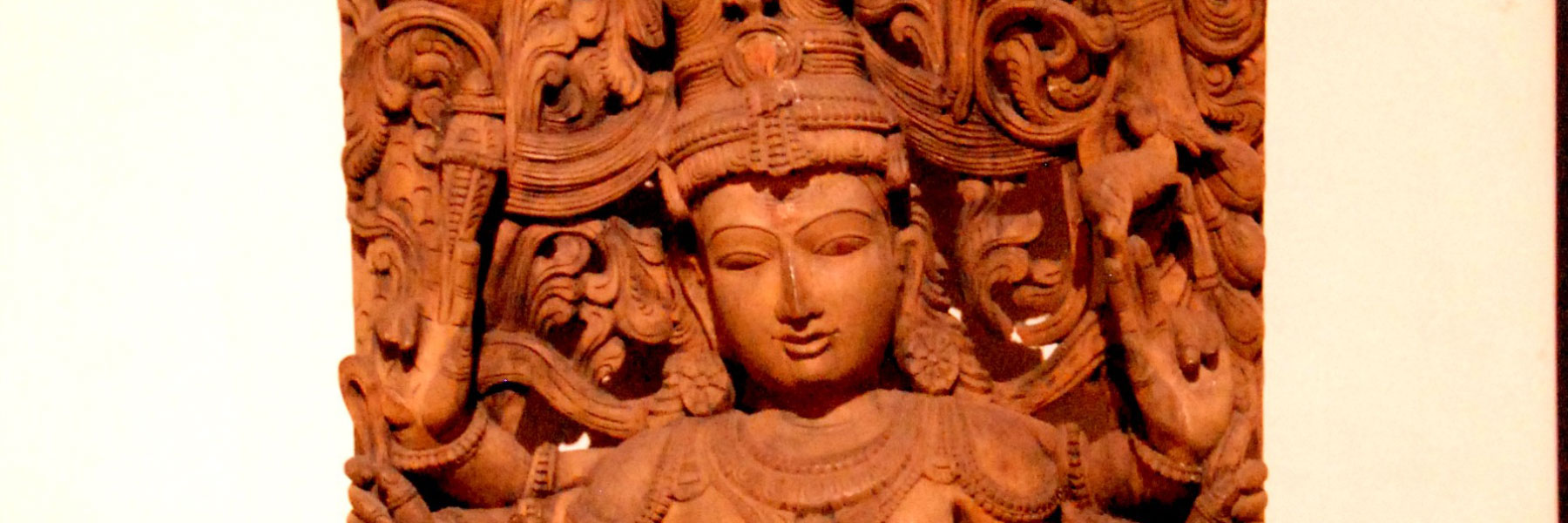
Sorry, we couldn't find anything that matches your search.
Destination

Famous Places to Explore in Hyderabad
A vibrant city with the imposing...

Raipur Tourist Places | Best Place to Visit
The stronghold of several erstwhile...

Ahmedabad
Declared as India's first UNESCO World...
#
Tribal Ornaments
The tribal communities of Jharkhand are known for their eclectic jewellery, which is mostly made from raw materials like beads, precious stones, bell-metal and brass. Some of the most attractive ornaments adorned by tribal communities include necklaces, earrings, anklets, bracelets and bangles. Women also sport a kardhani on their waist and tikuli on their foreheads.
The women of the Santhal tribe wear earrings featuring attractive motifs. Some of these ornaments are made of wild grass. The silver ornaments copy the kundan work while the earrings are fragile in appearance. Most of the tribal jewellery articles have motifs of berries, leaves and flowers.

Wood Work
Thanks to a rich forest cover, Jharkhand has an abundance of wood, which is used by people of various tribal groups to make beautiful wooden household articles. Some of the exquisite items tourists can buy include wall hangings, key hangers, fruit baskets, utensils, candle stands, flower vases, pen stands and toys.
The locals also use wood to make beautiful windows, doors, boxes and wooden spoons. The intricately carved designs and patterns of the articles represent the rich tribal heritage of Jharkhand that makes them a great choice for home decor. The tribal communities have a great respect for trees, which is why they use only the branches of trees to create artefacts rather than cutting down the entire tree to get wood.

Stone Carving
The tribal communities of Jharkhand follow the age-old tradition of stone carving, which involves etching beautiful designs and patterns on stones. Stone carving is one of the most popular crafts of Jharkhand and the artefacts made using this craft are proud representatives of the rich cultural heritage of the state and speak volumes about the lifestyle of the tribal communities of the region.
Tourists can buy some great deals at the handicraft emporiums of the city that sell rare stone carvings that make attractive memorabilia.

Santhali Dance
Practiced by one of the largest tribal communities, the Santhals, this enchanting dance form is a spectacular display of tribal culture and tradition. The history of the tribe is preserved and passed on in songs, folklore and dances. Santhali dances mostly revolve around religious celebrations of the tribe, who have a dance for almost every occasion.
Paikha and golwari are the popular forms of martial dances practiced by the Santhals that is a vigorous performance involving jumping and leaping. The dancers carry bows and arrows and perform mock fights. Meanwhile, their courtship dances, which are performed on full moon nights, are romantic and lively. The dancers perform to the tunes of loud drumming, and finely adorned women dance with singing men. The tribe also has a sowing and a hunting dance. While dhong and lagren are women-only dances that are performed on weddings and during social gatherings.

Paitkar Paintings
One of the most ancient schools of painting in the country, Paitkar paintings are a creative expression of the state’s folk art. Popularly known as the scroll paintings of the east, Paitkar paintings are mostly based on themes drawn from Hindu epics like Mahabharata and Ramayana.
These traditional paintings tell the stories of the miracles performed by various gods and goddesses like Shiva and Durga. Paitkar painters usually make use of only primary colours like red, yellow and blue with palm leaves acting as a base. The brushes used to paint are made from the hair of squirrels and goats. Most of the painted space in Paitkar paintings is occupied by human characters with elongated eyes, a prime characteristic of the Indian painting style. Located in the eastern part of Jharkhand, Amadubi Village is home to families of talented Paitkar artists. The village is also known as the village of Paitkars and the art form is said to have originated here. The Santhal tribe of the state believes that Paitkar paintings can send wandering souls of dead people to heaven.

Paika
This popular dance form of Jharkhand is performed only by male dancers, where the moves are a blend of martial arts and local dance steps. The dancers carry a sword in one hand and a shield in the other, and often adorn safety chest plates and headgear for protection. They also tie bells to their ankles and dance to the melodious tunes of shahnai, dhak and drums.

Karma Dance
The dance form of karma derives its name from a tree by the same name. It is considered sacred by locals as it is expected to bring good luck and prosperity. The tree is planted during the festival of karma in the month of August. The dance is performed during this festival by both men and women.

Janani Jhumar
Janani Jhumar is a popular folk dance performed by tribals mostly during the harvest season as a way to express their happiness. This dance form is performed by the womenfolk of Jharkhand and is a major attraction of the karma festival, which is celebrated with great fervour in Jharkhand during the Hindu calendar month of Bhadrapad (August-September). The musical instruments used are mandar, dhol, kartal, flute and sarangi.

Chhau Dance
One of the most famous dance forms in the country, chhau is derived from Sanskrit word, ‘chhaya’ meaning mask, image or shade. The semi-classical dance is inspired from martial, tribal and folk traditions. This dance form is performed in three different styles in the states of Bihar, Jharkhand, Odisha and West Bengal. In Jharkhand, Seraikella chhau is performed mostly by an all-males troupe, who cover their faces with traditional masks.
The theme of the dance is mostly drawn from stories of Indian epics like the Mahabharata and the Ramayana. The dance form is mostly performed during the spring season and brings people from diverse socio-economic backgrounds together.

Bamboo Works
Being a natural reservoir of bamboo, Jharkhand is famed for its unique bamboo products. The Chota Nagpur Plateau is home to densely populated forests lined with bamboo groves. The tribal people of Jharkhand have been using bamboo to make daily use products like baskets, vases, fishing equipment and other decorative items since ancient times.
The tribes of the state have mastered the art of making exquisite items using bamboo and cane. The thicker bamboo stems are used for creating stronger products and decorating buildings while cut bamboo is used to make water containers and other useful products. Tourists can also shop for beautifully woven bamboo floor mats.








